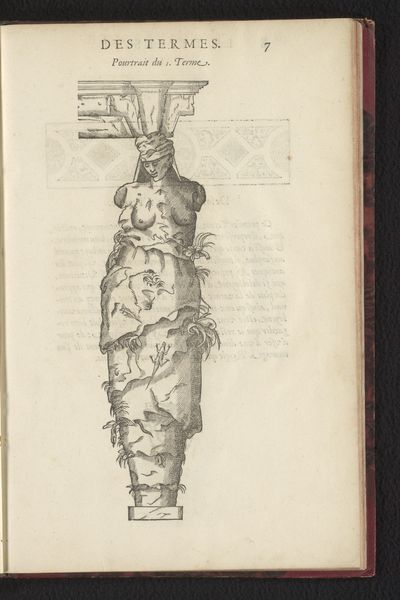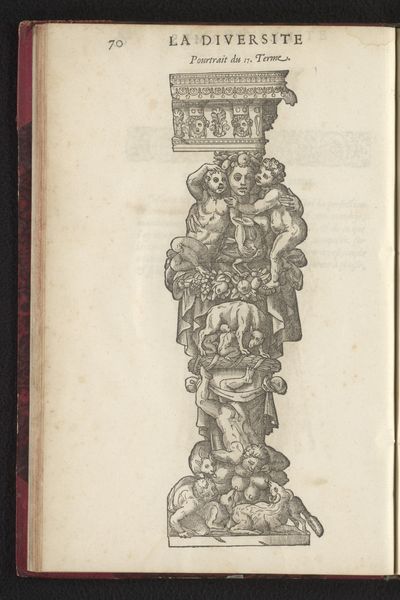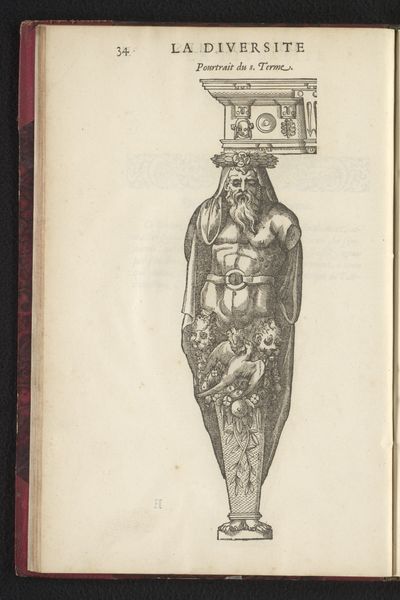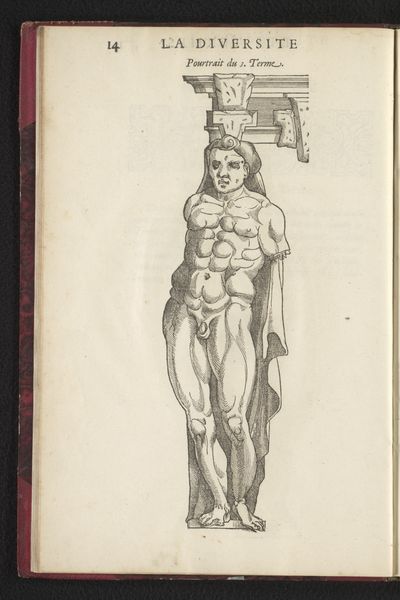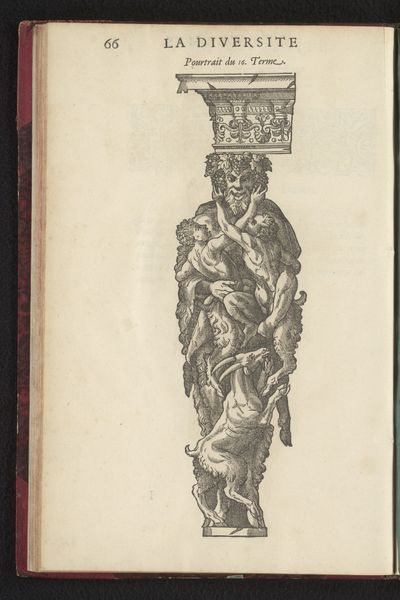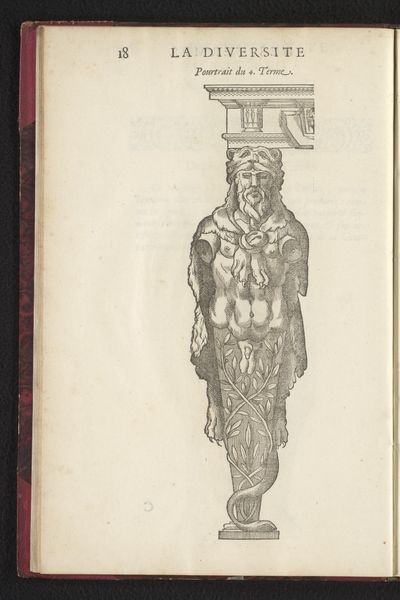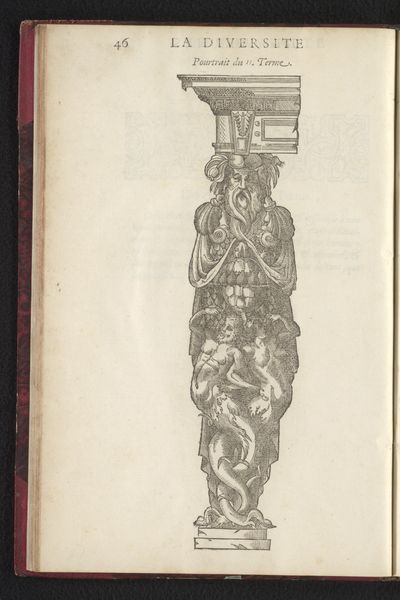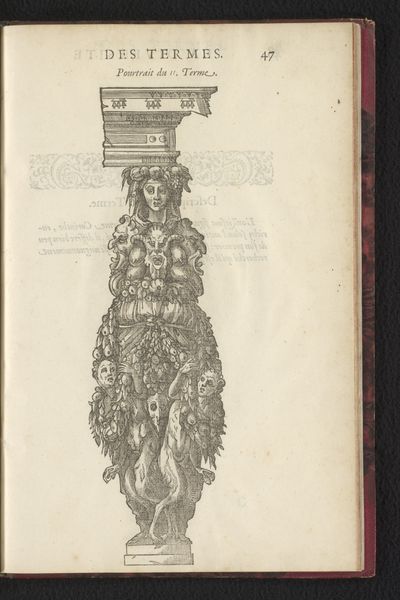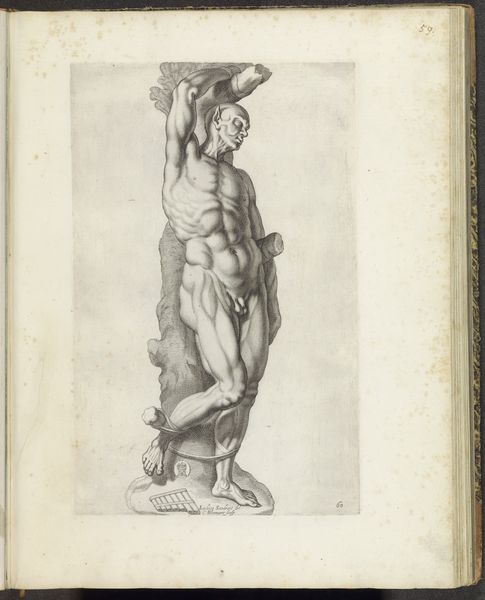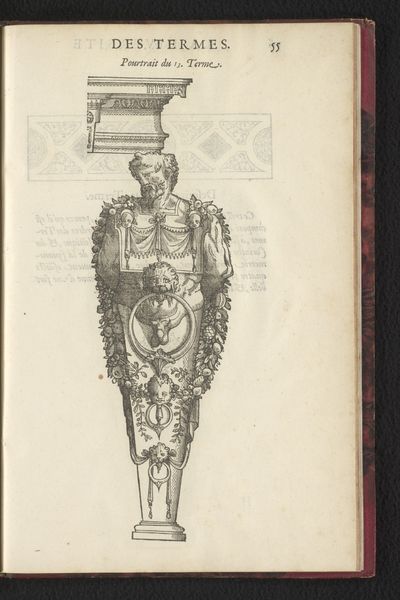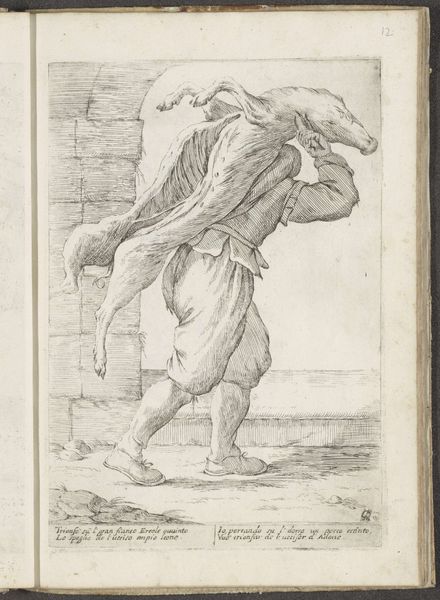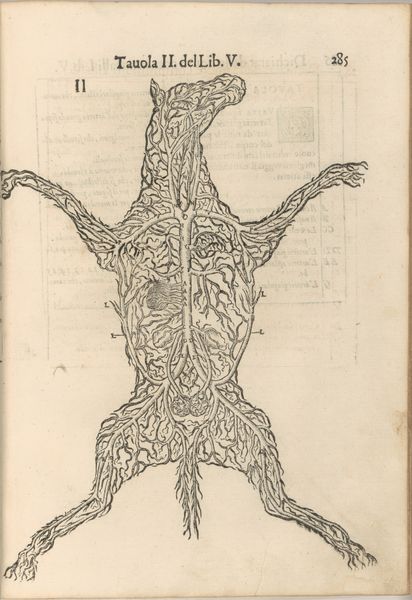
drawing, print, ink, engraving
#
drawing
#
allegory
# print
#
pen sketch
#
figuration
#
form
#
11_renaissance
#
ink
#
pen-ink sketch
#
history-painting
#
engraving
Dimensions: height 308 mm, width 201 mm
Copyright: Rijks Museum: Open Domain
Editor: This engraving, "Mannelijke term van begroeide steen," created in 1572, depicts a male figure emerging from a pillar of rock and foliage. It's quite strange, almost grotesque. What are your thoughts on its interpretation? Curator: It’s intriguing to see the blurring of the natural and the artificial here. The image points to a period grappling with the rise of Mannerism, where the classical ideals of harmony and balance were being deliberately distorted. Look how the figure is presented, not as an idealized human, but bound and constrained. What socio-political message could this constraint be sending? Editor: Perhaps it comments on the constraints of societal expectations or even the physical burdens placed on the male figure? It seems very much about the public image. Curator: Exactly. Think about the context: printmaking was becoming increasingly accessible. These images weren't just aesthetic objects; they were tools for disseminating ideas. The monstrous or grotesque in art often served as a cautionary tale, a reflection of societal anxieties about power, morality, and the natural world. Could this be a symbolic commentary on the perceived corruption of the Church, or perhaps a criticism of emerging secular powers? Editor: I never thought about it that way. So, beyond just aesthetic interest, it really served a propagandistic function, almost like a political cartoon. Curator: Precisely. Consider the public role of imagery during this period, when political and religious tensions were particularly high. What better way to express complex anxieties than through visually striking allegories such as this one? Editor: That gives me a whole new appreciation for how to consider Renaissance art. Thanks for highlighting that deeper context! Curator: My pleasure! Considering the interplay between artistic expression and socio-political forces truly enriches our understanding of art's function.
Comments
No comments
Be the first to comment and join the conversation on the ultimate creative platform.

